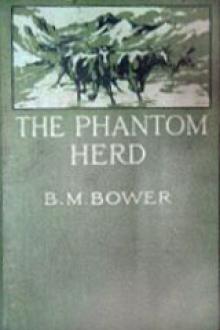Spinifex and Sand<br />A Narrative of Five Years' Pioneering and Exploration in Western Ausralia by David Wynford Carnegie (popular books of all time TXT) 📕

Read free book «Spinifex and Sand<br />A Narrative of Five Years' Pioneering and Exploration in Western Ausralia by David Wynford Carnegie (popular books of all time TXT) 📕» - read online or download for free at americanlibrarybooks.com
- Author: David Wynford Carnegie
Read book online «Spinifex and Sand<br />A Narrative of Five Years' Pioneering and Exploration in Western Ausralia by David Wynford Carnegie (popular books of all time TXT) 📕». Author - David Wynford Carnegie
Although I have elsewhere described the primitive nature of the postal arrangements on the goldfields, it must be borne in mind that this relates to early days; now, the number of letters passing through the offices reaches 26,000,000; of newspapers, 17,000,000; while parcels to the extent of 5,000,000, and over a quarter of a million of postcards, and 1,000,000 telegrams were dispatched in one year, although the Postal Department all over the Colony is shockingly managed. There are no less than 5,429 miles of telegraph line open. The rapid increase displayed in these figures is the outcome, undoubtedly, of the gold discovery. The first official record of gold production was in 1886, when the yield for the six months ending that year was 302 oz., valued at £1,148. The yield for 1897 was over 700,000 oz., representing rather more than 2 1/4 millions sterling.
Owing to the “sporadic and pockety” nature of the finds it was at first supposed that gold would only be found in superficial deposits. This supposition has now been completely upset by the result of sinking operations at Kalgoorlie and elsewhere.
The richness of the Western Australian goldfields is established beyond the possibility of a doubt, and though over-capitalisation and want of proper management have had their customary ill-effects upon the industry, yet the undoubted and immense value of the auriferous yield should make the ultimate prosperity of the Colony a matter of certainty.
But the Colony does not rely alone upon its gold for prosperity. It has other and substantial sources of revenue in lead, copper, tin, coal, and timber, to say nothing of the excellence of the agricultural outlook.
The mineral district of Northampton, connected with the port of Geraldton by railway, is rich in lead and copper. Tin has been found in great quantity at Greenbushes in the South-West. Thirty years ago these districts were worked for their ores, but a great scarcity of labour, combined with a sudden fall in the prices of the metals, led to the abandonment of the mines. Since, however, the discovery of telluride ores at Kalgoorlie the abandoned lead and copper mines have recovered their old value, and many mining leases have quite recently been taken out in the Northampton district for the purpose of working them, and after the preliminary work of emptying the old shafts of the water which has accumulated, has been accomplished, there is every probability that smelting operations will yield a handsome profit. Coal has been found on the Collie River district and, tested by the Government, has been proved to be of good quality and to exist in seams varying from two to four feet in thickness.
The Government, by way of trial, raised 1,000 tons of coal at a cost of about 16 shillings per ton. The field is open to private enterprise, and as the land may be leased on the lowest possible terms there seems to be a good opening for the capitalist.
In considering other sources of revenue in the Colony I should be inclined to put that of the timber industry at the head, and this the more so that steps have been taken by the West Australian Government for the proper conservation, systematic working, and efficient replanting of the forest-lands. Hitherto in young colonies the disafforesting of districts has been for agricultural and other purposes recklessly proceeded with. Warned by example, the West Australian Government have taken steps for the preservation and utilisation of their valuable forest-lands. In 1895 Mr. J. Ednie-Brown was engaged by the Bureau of Agriculture to make a tour of inspection in the Colony. This gentleman having had experience as Conservator of Forests both in South Australia and New South Wales, was eminently fitted for his position as Conservator in West Australia. Having made his tour in 1896 he issued his report. It is to this report I am indebted for the information contained in this brief notice.
The principal commercial forests lie in the South-Western districts of the Colony.
Mr. Ednie-Brown gives a list of thirty-five varieties of indigenous forest-trees, but as only a certain number of them are known to be of real commercial value, I shall confine my remarks to the better known and more widely used species. These are: Jarrah (Eucalyptus marginata), Karri (Eucalyptus diversicolor), Tuart (Eucalyptus gomphocephala). Sandalwood (Santalum cygnorum).
In addition to these are many important but secondary forest-trees, as the Wattle (Acacia saligna), Raspberry Jam (Acacia acuminata), Badjong (Acacia microbotrya), Peppermint Tree (Agonis flexuosa), Banksias of all sorts—the Sheoaks (Casuarina Fraseriana, glauca and decaisneana), the Red Gum (Eucalyptus calophylla), Wandoo (Eucalyptus redunea), Mallee (Eucalyptus oleosa).
There are many other trees of some value, but the foregoing represent the chief.
The total area of the principal forest regions of Western Australia covers no less than 20,400,000 acres, made up of:—
Jarrah 8,000,000 acres Karri 1,200,000 " Tuart 200,000 " Wandoo 7,000,000 " York Gum, Yate Sandalwood, and Jam 4,000,000 " ———— 20,400,000Jarrah is, without doubt, the principal forest-tree of Western Australia. This tree is dark grey in colour, with the bark strongly marked in deeply indented furrows. It grows on an average to a height of 90 to 120 feet, with stems 3 feet to 5 feet in diameter, running 50 to 60 feet to the first branch. There are, of course, very many larger individual specimens. The wood is red in colour, polishes well and works easily, and weighs when seasoned about 63 lbs. to the cubic foot. It is extensively used for wood-paving, piles, jetties, bridges, boat-building, furniture, and railway sleepers. It makes splendid charcoal, and when cut at the proper season exhibits remarkable durability both in the ground as fence-posts and in water.
Karri is the giant tree of West Australia. It is extremely graceful in appearance, with a yellowish-white smooth bark, which flakes off each year like that of our planes. The trees grow to a height of 200 feet, with a diameter of 4 feet at a height of 3 or 4 feet from the ground, and the first branch generally occurs at a height of 120 to 150 feet from the base. This tree does not occur in such numbers as the Jarrah, its field of growth being limited. Its timber resembles that of the Jarrah, but cannot be wrought so easily, though for purposes of street-paving it is superior. It is this wood which is so extensively used in London. It is also of value for bridge planking, shafts, spokes, felloes, waggon work, and beams.
Illustration 46: A Karri Timber TrainTuart is also comparatively limited in extent. It attains to a height of 100 to 150 feet, having a diameter of 7 to 9 feet at the base and about 40 feet to the first branch. Its timber is extraordinarily hard and tough and difficult to split. It is of great value as bridge supports, dock gates, stern posts, engine supports, etc., and it is also extensively used in the making of railway wagons and wheelwright's work generally.
Sandalwood, which is more of a bush than a tree, runs small as a rule. It is fairly distributed over the Colony. Formerly there was a greater trade in sandalwood than now; but the overstocked Chinese markets being sold out, the West Australia trade is rapidly reviving.
Raspberry Jam is a handsomely shaped rounded acacia, and gets its name from the scent of its wood, which is exactly that of the raspberry. An oil is extracted from the wood, which is highly perfumed. The wood is impervious to the attacks of the white ant.
In addition to these the Red Gum, the Wandoo, and York Gum are timber trees of value.
The total output of the saw-mills for 1895 was 130,000 loads, representing a gross value of £400,000.
It will thus be seen that the forests of the Colony form no inconsiderable portion of its wealth, and afford employment to large numbers of workers both in the forests themselves and in the saw-mills and wharves.
The culture of the vine and various fruits is carried on in the South-Western districts to a great extent—the soil, the climate, and the elevation all tending to give the best results.
The chief fruits grown are apples, pears, peaches, nectarines, plums, cherries, apricots, quinces, oranges, and lemons.
Viticulture forms a marked industry, though as yet largely undeveloped. There are 1,450 acres under cultivation, and this area is rapidly increasing. The slopes of the coastal ranges are admirably adapted for the culture of the vine, and the chief varieties grown are those most suitable for wine-making and for the table. Chasselas Doradillo, White Rice, Black Alicante, and Muscat of Alexandria are largely cultivated. There is, I conjecture, a good field open for the capitalist in the direction of the wine manufacture.
Pastoral and agricultural pursuits are carried on with success in many districts; agriculture is chiefly confined to the South-West corner of the Colony. Cattle, sheep, and horses are raised all along the coast-line from Albany to the De Grey, and in the far north, the Kimberley district. The Nor'-West, however, labours under the disadvantage of drought on the one hand and floods on the other. There are several regulations governing land tenure, and when the emigrant has made a selection of the land suitable for his purpose (and in this he should exercise great care), he can get his land either as a free grant, or on lease, or by conditional purchase. On these points emigrants will be fully informed at the office of the Agent-General (Sir Malcolm Fraser, K.C.M.G.), 15 Victoria Street, Westminster, S.W.
There is no doubt that the soil of the S.W. district is fertile to a degree, and capable of supporting a large pastoral and agricultural population; and, as prices rule high, doubtless an emigrant suitable for either pursuit would find good remuneration for his capital and labour.
In addition to the foregoing industries, there is another of almost equal importance—that of the pearl and pearl-oyster fishery. Reports have been issued by piscicultural experts, proving the suitability of the coasts for the culture of the fish, and the matter has “come into official consideration”; and it is to be hoped that Government will take steps to foster this lucrative pursuit, the centres of which are at Shark's Bay, about two hundred miles North of Geraldton, and at Broome, yet further North. In 1896, twenty-one tons of mother-o'-pearl were exported at a net profit of about £40 per ton. However, there is every reason to suppose that, properly and scientifically nurtured, pearl fishing should prove well worthy of attention.
Illustration 47: A Pearl Shell Station, Broome, N.W. AustraliaThough I have come to the conclusion that, unless Spinifex and Sand can be conjured into valuable marketable products, the far interior of the Colony is worthless for any purpose, yet I have also shown that beyond the borders of the desert Nature smiles her brightest; and, given population, West Australia may well vie in wealth and usefulness with any of her sister colonies.
End of the Project Gutenberg EBook of Spinifex and Sand, by David W Carnegie




Comments (0)